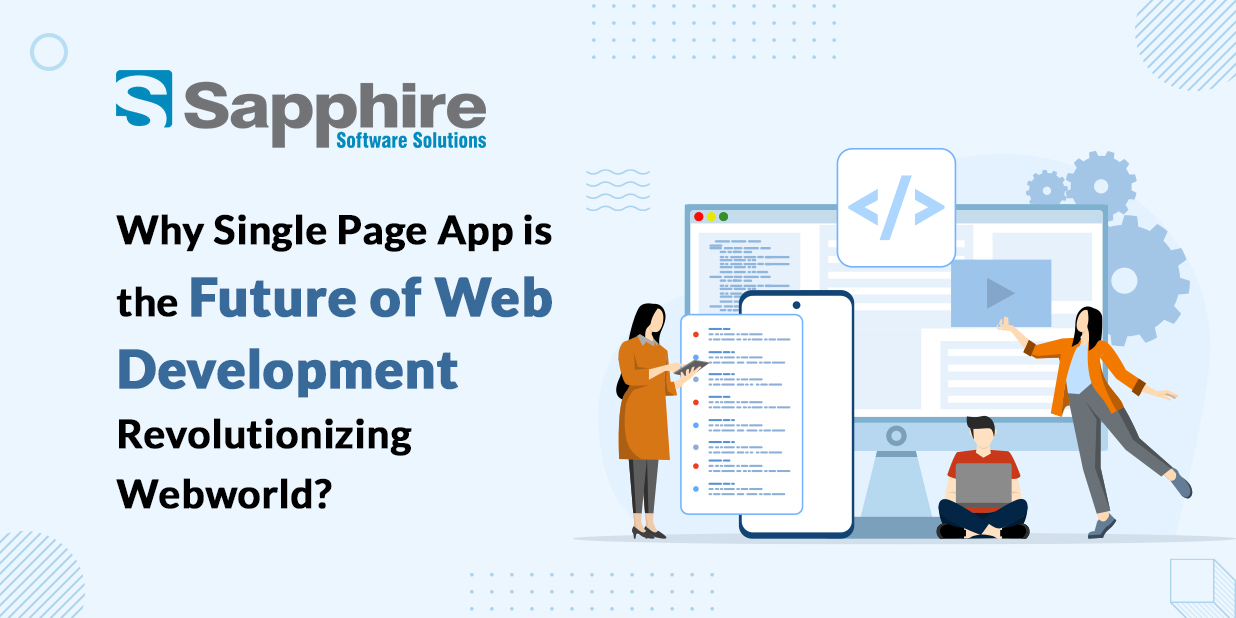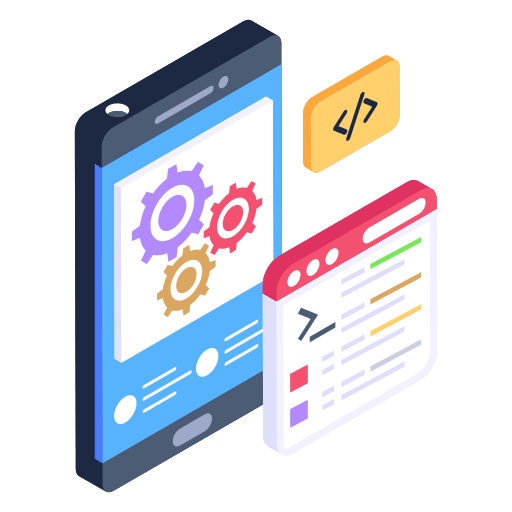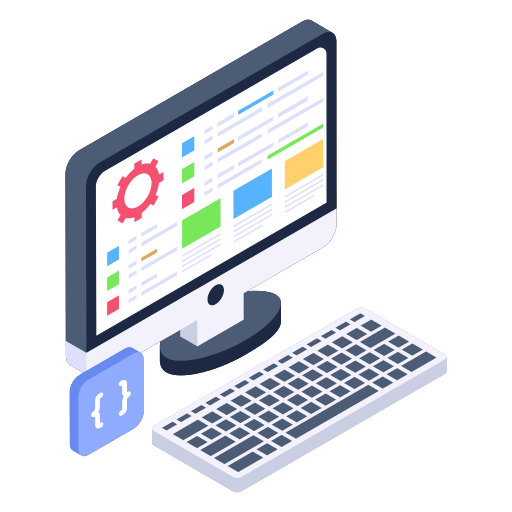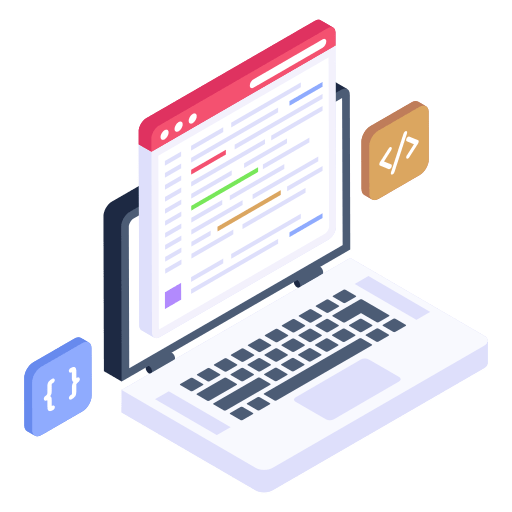Remember when browsing meant waiting for entire pages to reload with every click? That’s exactly what a single page application solves. I’ve watched web development evolve dramatically over the years, and SPAs represent one of the most significant improvements to user experience.
A single page app loads just once, then dynamically updates content as you navigate. When you visit a single page application website, your browser downloads all essential code upfront—HTML, JavaScript, and CSS. As you interact, JavaScript fetches only the data needed and updates specific portions without triggering a full reload.
The result? That smooth, seamless experience you enjoy on sites like Gmail or Facebook. No more jarring page transitions or waiting for content to appear. SPAs create the app-like experience we now expect online.
Evolution of Single Page Applications (SPA):
The journey to modern single page application development has been fascinating. Web development started with simple static pages in the early 2000s, where waiting for new pages to load was expected.
As internet speeds improved, developers began exploring new approaches. AJAX emerged around 2005, allowing parts of a page to update independently—the precursor to modern single page application javascript techniques.
The real breakthrough came with specialized frameworks. AngularJS (2010) introduced two-way data binding and dependency injection. React revolutionized everything with its virtual DOM and component-based architecture. Vue.js and Svelte later joined the ecosystem, each bringing unique advantages.
Early SPAs struggled with issues like SEO and initial load times. Today, we have sophisticated solutions like server-side rendering that combine the best of both worlds. The evolution continues as browsers become more powerful, enabling increasingly complex single page app architecture.
Top Benefits of Using a Single Page Application for Your Website:-
Having worked on dozens of web projects, I can attest that the single page app benefits are substantial:
- Faster user experience: After initial load, navigation feels instantaneous. I’ve seen e-commerce platforms reduce cart abandonment by 20%+ simply by eliminating page reloads.
- Uninterrupted browsing: Without the jarring white flash between pages, users stay engaged longer. Analytics consistently show increased session times with well-built SPAs.
- Reduced server load: SPAs transfer processing burden to the client’s browser, often reducing server costs by 30-40%.
- Simplified development: The clean separation between frontend and backend enables teams to work concurrently with minimal conflicts.
- Offline capabilities: Modern SPAs paired with service workers can function even with spotty internet—crucial for applications used in remote areas.
- Superior mobile experience: The reduced data transfer after initial load makes SPAs perform excellently even on slower mobile connections.
- Better debugging: The modular nature of single page application javascript makes isolating and fixing issues much simpler than in traditional codebases.
These advantages make SPAs ideal for interactive dashboards, social platforms, SaaS products, and applications where user experience is paramount.
What are the Single Page App Frameworks? How Does It Work?
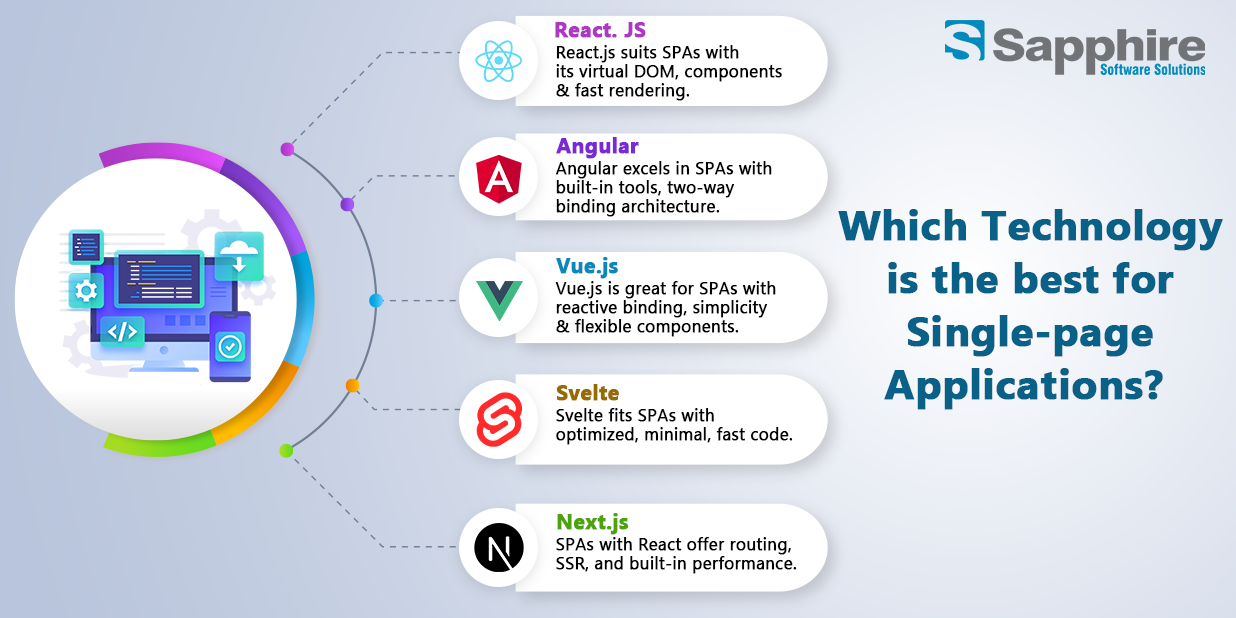
1. Angular:
Google’s comprehensive framework excels in enterprise applications. Its opinionated approach provides integrated solutions for routing, forms, HTTP communication, and more. Angular’s TypeScript integration helps catch errors before production, making it ideal for large-scale applications requiring consistency.
2. React:
Facebook’s library transformed UI development with its component-based architecture and virtual DOM. Its flexibility and extensive ecosystem—Redux, React Router, Next.js—create a robust foundation for single page application development of any size.
3. Vue.js:
Offering a gentle learning curve yet powerful capabilities, Vue combines the best ideas from Angular and React in a more approachable package. Vue 3’s Composition API makes it even more compelling for modern applications.
4. Svelte:
This newer approach shifts work to compile-time rather than runtime, resulting in notably smaller bundles and better performance. It’s gaining traction for performance-critical applications.
So how do these enable single page applications? At their core, they manage application state and efficiently update the DOM when that state changes. When you navigate in an SPA, single page application javascript intercepts the click, changes the browser’s URL via the History API, fetches any needed data as JSON, and updates only the necessary parts of the page.
This eliminates the white flash between page loads and dramatically reduces data transfer after initial load. The framework orchestrates all components, ensuring correct updates based on user interactions and data changes.
How to Build a High-Performance Single Page Application with Angular?
Creating a truly performant single page application Angular project requires strategic planning:
- Start with thoughtful architecture: Map your component structure, state management strategy, and data flow before coding. Poor architectural decisions become expensive to reverse later.
- Use Angular’s performance features: Implement OnPush change detection to dramatically reduce unnecessary checks, especially in larger applications.
- Implement lazy loading: Structure your single page app architecture around feature modules that load only when required, reducing initial bundle size by 50-60%.
- Optimize assets: Use modern image formats and responsive techniques to deliver appropriately sized assets to each device.
- Consider Angular Universal: For content-heavy SPAs where SEO matters, server-side rendering provides both good search rankings and fast navigation.
- Design intelligent caching: Combine service workers, HTTP caching, and local storage to minimize network requests and create near-instantaneous experiences.
- Monitor bundle sizes: Regularly check bundle composition using Angular CLI’s build analyzer to identify opportunities for optimization.
- Virtualize long lists: For tables or lists with hundreds of items, render only what’s visible in the viewport to maintain smooth scrolling.
- Establish performance budgets: Set metrics your application must meet, like maximum bundle size or target Time to Interactive score.
These practices consistently produce Angular applications that exceed performance expectations, even on lower-powered devices and slower networks.
Single Page Applications vs. Multi-Page Applications: Which One Should You Choose?
The choice between single page applications vs. multi-page applications depends entirely on your specific needs:
When to choose SPAs:
- Your users need instantaneous, app-like interactions
- The application maintains complex state during a session
- Users spend significant time in the application
- Real-time features are essential
- You’re building a tool or dashboard rather than content-focused site
I recently built a collaboration platform as a single page application website, allowing users to see updates instantly without disruption—something nearly impossible with traditional architecture.
When MPAs make more sense:
- SEO is critical to your business model
- Content is diverse and primarily static
- Users typically visit from search engines
- Pages function independently
- Complex state management isn’t required
For an educational platform with diverse content requiring strong SEO, we chose a multi-page approach because users visited specific articles directly from search engines.
Consider hybrid approaches:
Modern tools like Next.js let you use single page application javascript techniques while generating individual HTML pages for each route—giving both excellent SEO and smooth client-side navigation after initial load.
Your decision should be guided by user needs rather than technical preferences. Consider how people will use your application and what metrics matter most for your business.
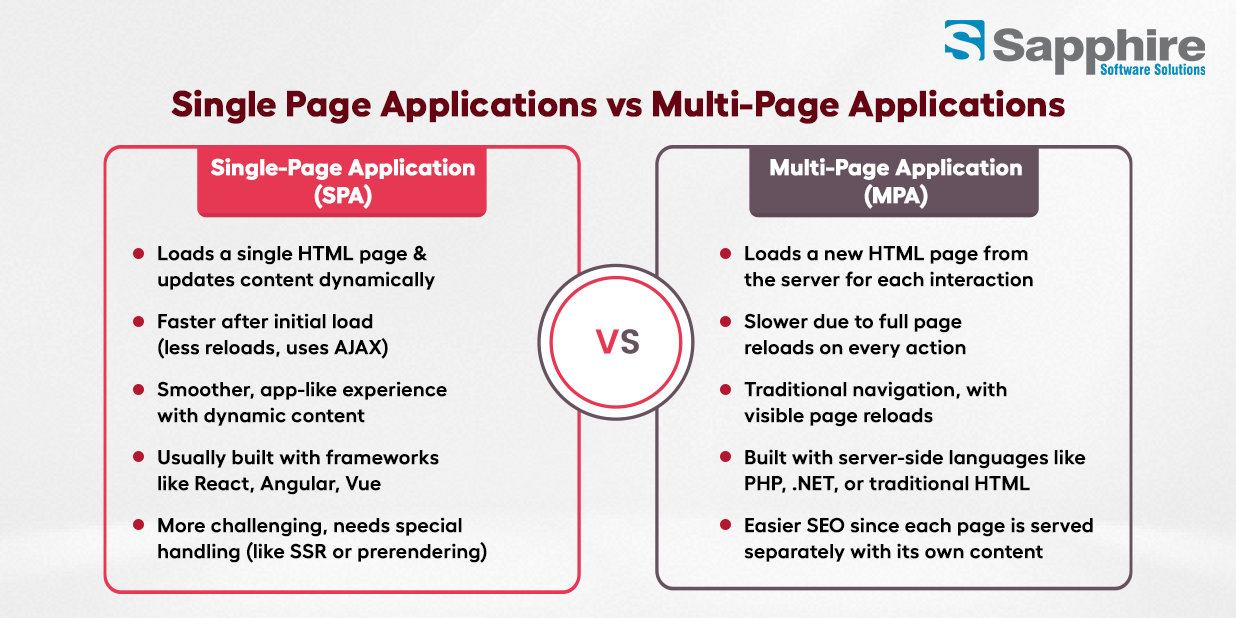
What to Look for in a Single Page Application Development Company?
Finding the right partner for single page application development requires careful evaluation. Look for:
- Deep technical expertise: Ask about specific performance optimizations, state management approaches, and testing strategies. Quality partners share detailed case studies showing how they’ve solved challenges like yours.
- Thorough discovery process: Great teams insist on understanding your business goals and user needs before estimating. They ask probing questions rather than rushing to quote.
- Relevant experience: Evaluate a single page application development company based on their experience with similar complexity in your industry. Domain expertise often proves as valuable as technical skills.
- Results focus: Top partners discuss how their work improved metrics like conversion rates or user engagement for past clients, not just technical deliverables.
- Transparent communication: Look for regular demos, clear status updates, and direct access to developers—not just account managers.
- Post-launch support: Discuss how they handle ongoing maintenance, monitoring, and improvements. Quality partners view applications as evolving products.
- User-centered approach: Technical implementation matters, but ultimately, it’s about user experience. The best teams incorporate UX research and accessibility throughout development.
- Knowledge transfer: Your team should understand how to maintain the application after handover. Ask about documentation and training provided.
Remember that quality single page application development services require skilled developers who command appropriate rates. The cost of fixing poorly built applications almost always exceeds initial savings.
Why Choose Sapphire for Single Page Application Development Services?
Sapphire Software Solutions offers distinct advantages for single page application development services:
Their technical versatility stands out immediately. Unlike shops specializing in one framework, Sapphire maintains expertise across the spectrum of modern single page app frameworks—Angular, React, Vue, and emerging tools like Svelte. This framework-agnostic approach ensures they recommend technology that fits your specific needs.
Their process begins with extensive discovery that goes beyond surface requirements. In a healthcare project, they invested time understanding not just technical specifications but also regulatory compliance needs and specific user workflows. This thoroughness minimizes revisions and accelerates adoption.
Performance optimization is embedded in their development approach. Their engineers implement advanced techniques like code splitting and effective caching as standard practice. A dashboard they built maintained sub-second response times even with hundreds of thousands of records.
Sapphire Software Solutions emphasizes knowledge transfer, unlike vendors who create dependency through obscure code. They provide comprehensive documentation, conduct training sessions, and structure code for maintainability.
Their portfolio demonstrates versatility across industries—fintech, healthcare, education—with thoughtful single page app architecture decisions tailored to specific business contexts.
For organizations exploring single page app ideas but uncertain about implementation approaches, Sapphire offers consultation to develop strategic roadmaps. Their post-launch support options range from basic maintenance to ongoing development partnerships, with response times that consistently exceed industry standards.
While quality comes at appropriate rates, their transparent pricing and execution efficiency provide excellent value measured against business outcomes and total cost of ownership.
Future-proof your web presence with Single Page Applications powered by the latest frameworks.
Final Thoughts:
Throughout my years in web development, I’ve seen firsthand how single page applications have transformed digital experiences. They’ve established new baseline expectations—speed, responsiveness, and seamless interactions are now essential, not optional.
The SPA approach adapts beautifully across contexts, from simple informational sites to complex enterprise tools. I continue to be impressed by innovative single page app ideas that push browser capabilities to new heights.
Success requires thoughtful execution. Early technical decisions—framework selection, state management approach, data fetching strategies—have far-reaching implications. These aren’t choices to make based solely on trends.
Whether you’re building your first single page application website or modernizing an existing platform, remember that technology should serve your business goals—not the other way around. The right approach might be a pure SPA, a traditional multi-page application, or increasingly, a hybrid solution.
As browsers evolve and new standards emerge, single page application javascript capabilities will only expand. Technologies like Web Assembly and Progressive Web Apps are opening new frontiers for browser-based applications.
Finding the right development partner—one who understands both technical nuances and business context—makes all the difference. Look for a team that asks insightful questions, challenges assumptions when appropriate, and focuses on measurable outcomes.
The future of web applications is exciting, with single page applications continuing to play a central role. By implementing these technologies thoughtfully, you can create digital experiences that not only meet current expectations but anticipate tomorrow’s possibilities.



















